Ideas
Why The Effort At Kashi Needs To Be Celebrated Without Finding Pointless Flaws
Harsha Bhat
Dec 10, 2021, 08:41 PM | Updated Dec 14, 2021, 02:15 PM IST
Save & read from anywhere!
Bookmark stories for easy access on any device or the Swarajya app.
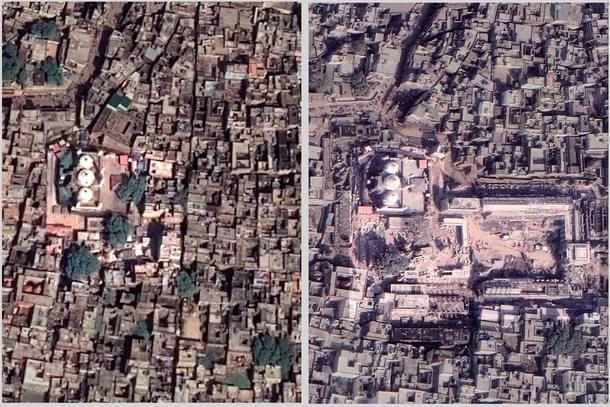
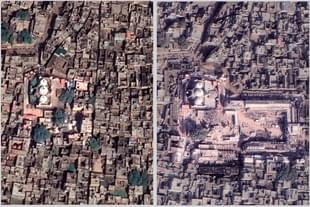
How do you make a long line short? Trim it, chop it, erase it, bend it. But if no such ‘destructive’ or subtractive action is permissible or feasible, how do you accomplish the said target? You draw a longer line next to it.
If this simple analogy registers within the brains of all those ‘Hindus’ and self-proclaimed flag bearers of Dharma opposing, what they call not ‘Hindu enough an effort’ in Kashi, they would realise the futility of all their struggle to paint it in all but positive colours.
For centuries, Vishwanath‘s home in Kashi was say a 2000 sq ft space cramped between a maze of structures that left the temple looking like just another structure, if one were to view it from the sky above. The structure that stands where once stood the older temple of Vishweshwar before Aurangazeb brought it down was what undisputedly stood towering in comparison, be it as you walked past it or watch it from above.
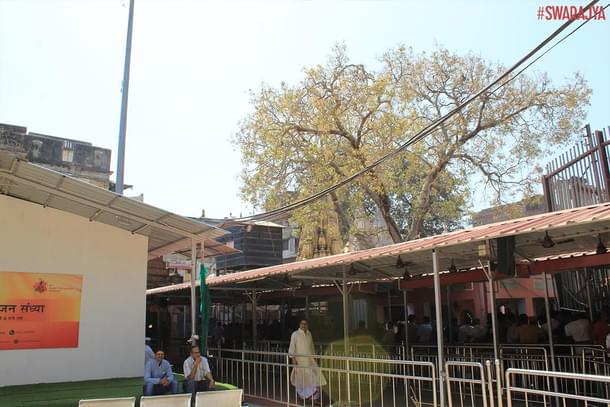
But in a simple stroke of redesigning the space, the long line has been shortened, by drawing off course a longer grander line that now dismisses the other structure to a corner while expanding the 2000 sq ft to a magnificent 5,00,000 sq ft.
Check Google earth and compare the visuals of five years ago and now and you can witness this subtle achievement of reclaiming for Vishwanath, his glory in space and time by clearing just two lanes.
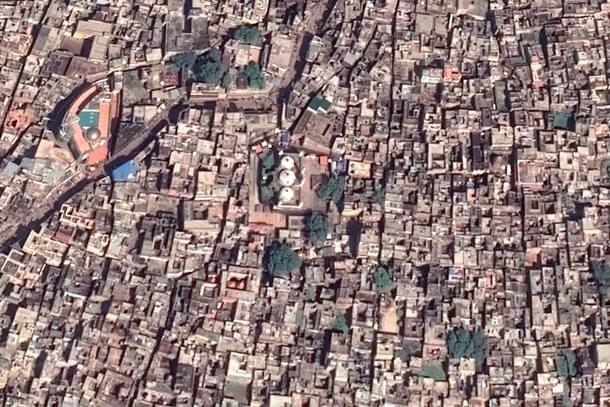
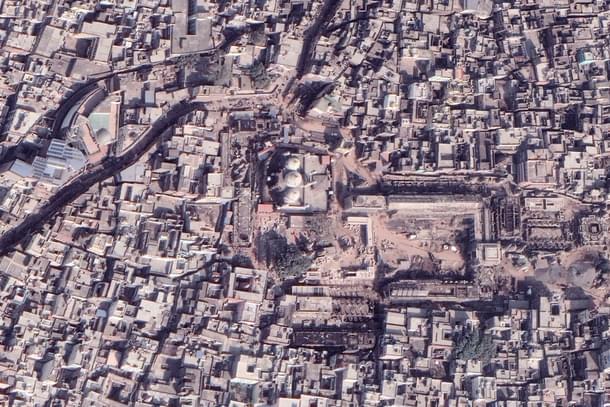

Yes, just two lanes have been cleared for the purpose of the project. Like the project’s architect Bimal Patel clarified on a Zoom meeting where this author was present, in response to those that say the character of Kashi has been altered, ‘Only two lanes were cleared to make the path from the temple to the Ganga’.
”Kashi itself must be about 8 or 9 sq kms of area. This temple precincts is only 40,000 sq mt. So anyone who claims that all of Kashi has been transformed, you can do the math, and see it is only a fraction” he said, adding how he demonstrates in presentations through a slowly zooming out view to see that the change is so small. ‘It is immensely significant place in Kashi, but it is physically a small area. So there is a huge amount of Kashi, while these are only two lanes of Kashi, which has hundred of them. This is only a small portion’
”It is not a thing which has one uniform character...Different styles have come, different times, different types of architecture, and we must be true to our time…We must add in a way that is sensitive to the heritage but at the same time, not just the time to mimic everything from the past”
So as Patel explained, the parisar around the temple is ‘very much in a very traditional form, the sititing space outside it has more decoration on it, tries to blend in a little more, and further down, slightly more modern and functional vocabulary‘.
“So it is an addition of the present looking to the future. We are transforming this area, there is no doubt about it,” he added.
And this is a transformation that no pilgrim will have complaints about. As Varanasi Divisional Commissioner Deepak Agarwal elaborated on the same meet, while the population of Kashi was 18 lakh in 2018, the visitor count was around 62.2 lakhs.
And it is this scale of people that the corridor project attempts to accomodate, provide for and offer a truly spiritual experience of having visited one of the most sought after spiritual Hindu destinations in the country.
“Perseverance was our main key…the path we had to take was of coordination and cooperation rather than confrontation and the direction from the leadership was very very clear - that in no way we have to adopt a path of conflict or one that’s confrontationist in nature“ he elaborated.
For after countless negotiations for the acquisition of the houses, when demolition actually began, temples began to emerge from inside the structures, which is when the architect was asked to accommodate these new discoveries and alter the original plan of the project.
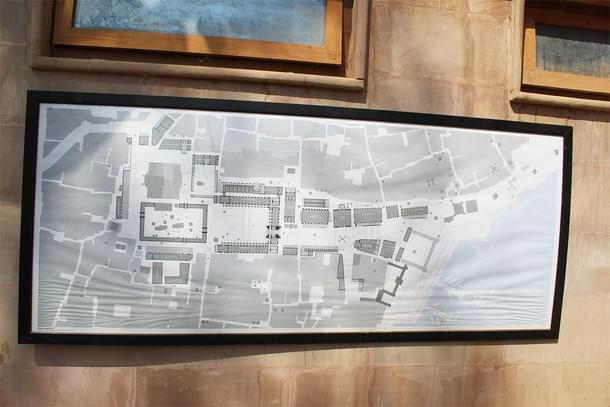
While the bigger temples found were liberated carefully from the buildings that held them and restored, this writer is a witness to their transformation. Smaller ones were also refurbished and those that were just vigrahas, without a super structure, said Agarwal, are being reinstalled into new 27 temples that are being built by the temple trust.
How then, can anyone worth any wisdom, accuse the Corridor project of “ destroying what made Varanasi a special city”.
How does a space that will only invite many more lakhs of people to Kashi without having to worry about the dingy lanes or the chaos around the temple, reduce its ‘character’? Calling a work in progress a ‘construction site’ as some writers have done is not just myopic but also reflective of a lack of sense of perspective. For ’Jeernodhar’ is what temples, at least in my part of the country’ undergo at regular intervals; that which can no longer contain the greatness of the space must go and make way for development.
Anyone, from across the country, rooted in Dharma, knows that Kashi was a city where people came to shed their form. Kashi stood for and is home to the Lord of Destruction; destruction for liberation from the old and that which can make way for a more glorious one that can facilitate seeking the ultimate with greater ease.
If anything, the legacy has been fittingly paid tribute to by enabling access. Those who have dared call this an effort that has left Shiva ‘imprisoned in a monumental stone’, have turned a blind eye to the fact that Ganga now doesn't have a maze keeping her from the one who brought her to Kashi and ensured she reverses her flow to do so.
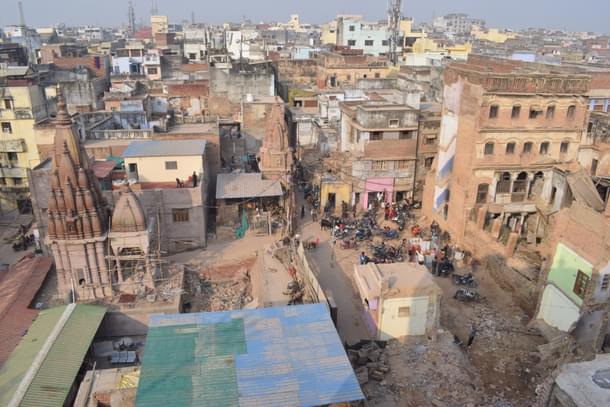
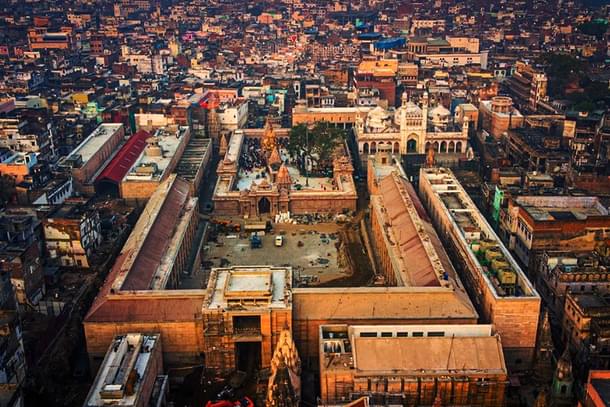
Sure, ‘one should be gentle with history’ as the writer of this piece that reduces the sanctity of what is being offered to a construction site, sermonises, but what could be more gentler than doing justice to a space that was yearning for its due space and glorious place in the map of Kashi, while hurting none. What could be more gentler than a clear cut instruction from the leadership that the path of perseverance was to be followed in acquiring land and not one of conflict or confrontation?
What could be more gentler than the fact that even those whose homes wouldn’t, going strictly by law, fetch them even a portion of what has been paid them in compensation, but were accommodated based on their socio-economic condition and rights over the rituals at the Manikarnika ghat?
The temple had been destroyed multiple times, as goes the lore, even before Aurangazeb built the structure that currently stands there at the site. Malhar Rao Holkar in 1742 wanted to bring down the structure but couldn’t. His daughter-in-law did build the temple but at the site adjacent to its original location. But the history of last few hundred years let a myriad of buildings and structures mushroom around the temple which saw the structure at the original site stand in all glory but sent Vishwanath and his home into a space where he had to be ‘sought to be found’.
And what could be gentler than reversing this and liberating Vishwanath of Kashi from the reinforced concrete and brick and mortar maze, and ensuring his is the grandest space in a town that clearly belongs to him and him alone.
Harsha Bhat is an author, linguist, content strategist, and a compulsive chronicler of Bharat's civilisational heartbeat.




